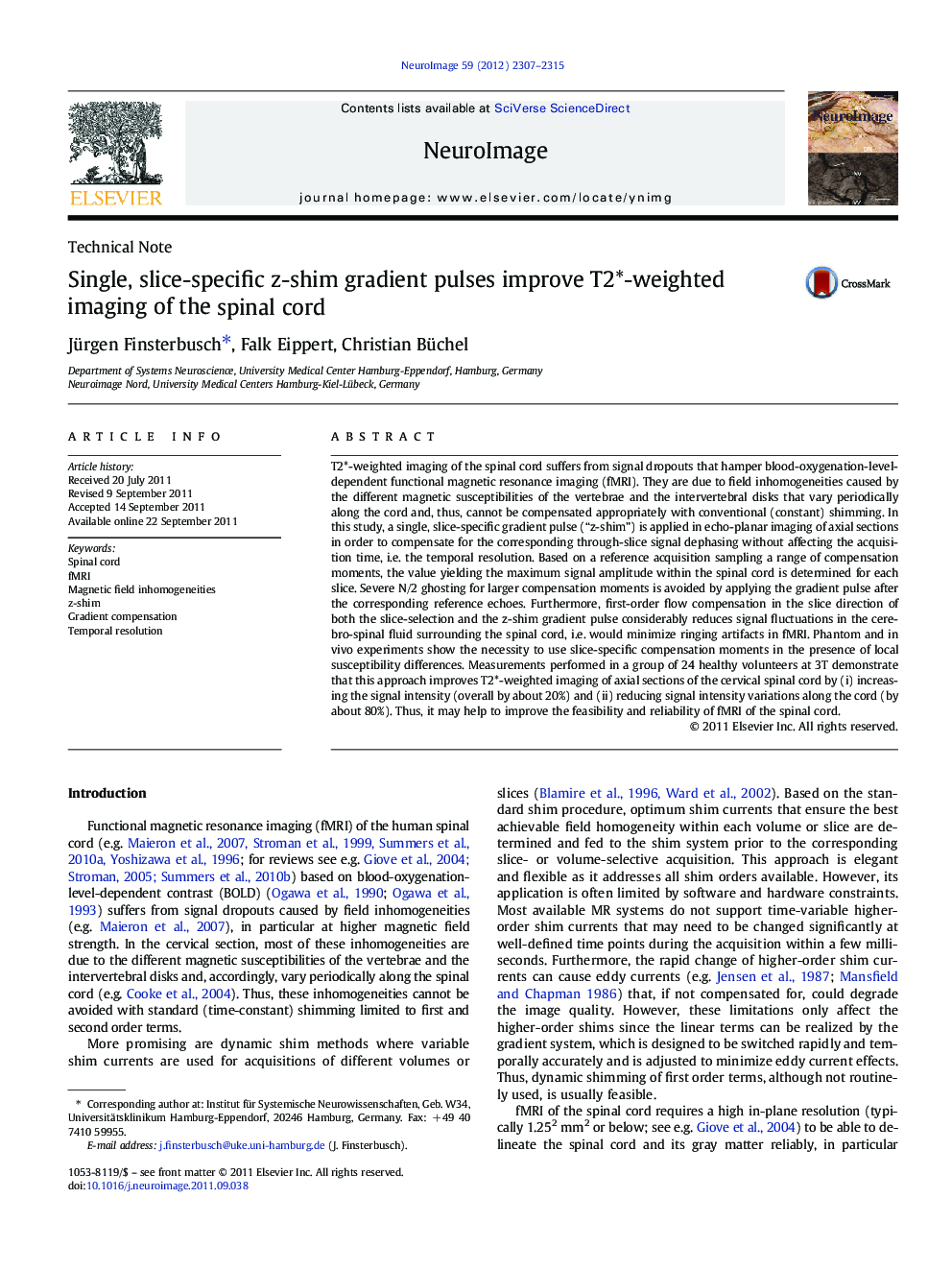| Article ID | Journal | Published Year | Pages | File Type |
|---|---|---|---|---|
| 6033486 | NeuroImage | 2012 | 9 Pages |
T2*-weighted imaging of the spinal cord suffers from signal dropouts that hamper blood-oxygenation-level-dependent functional magnetic resonance imaging (fMRI). They are due to field inhomogeneities caused by the different magnetic susceptibilities of the vertebrae and the intervertebral disks that vary periodically along the cord and, thus, cannot be compensated appropriately with conventional (constant) shimming. In this study, a single, slice-specific gradient pulse (“z-shim”) is applied in echo-planar imaging of axial sections in order to compensate for the corresponding through-slice signal dephasing without affecting the acquisition time, i.e. the temporal resolution. Based on a reference acquisition sampling a range of compensation moments, the value yielding the maximum signal amplitude within the spinal cord is determined for each slice. Severe N/2 ghosting for larger compensation moments is avoided by applying the gradient pulse after the corresponding reference echoes. Furthermore, first-order flow compensation in the slice direction of both the slice-selection and the z-shim gradient pulse considerably reduces signal fluctuations in the cerebro-spinal fluid surrounding the spinal cord, i.e. would minimize ringing artifacts in fMRI. Phantom and in vivo experiments show the necessity to use slice-specific compensation moments in the presence of local susceptibility differences. Measurements performed in a group of 24 healthy volunteers at 3T demonstrate that this approach improves T2*-weighted imaging of axial sections of the cervical spinal cord by (i) increasing the signal intensity (overall by about 20%) and (ii) reducing signal intensity variations along the cord (by about 80%). Thus, it may help to improve the feasibility and reliability of fMRI of the spinal cord.
Graphical abstractDownload high-res image (138KB)Download full-size imageHighlights⺠Single, slice-specific z-shim gradients are applied to T2*-weighted spinal cord MRI. ⺠Signal dropouts were reproducibly observed and compensated by the z-shimming. ⺠The signal intensity is overall increased by about 20%. ⺠The signal variation along the cord is reduced by 80%. ⺠Proper positioning of the z-shim pulse and flow compensation minimize artifacts.
